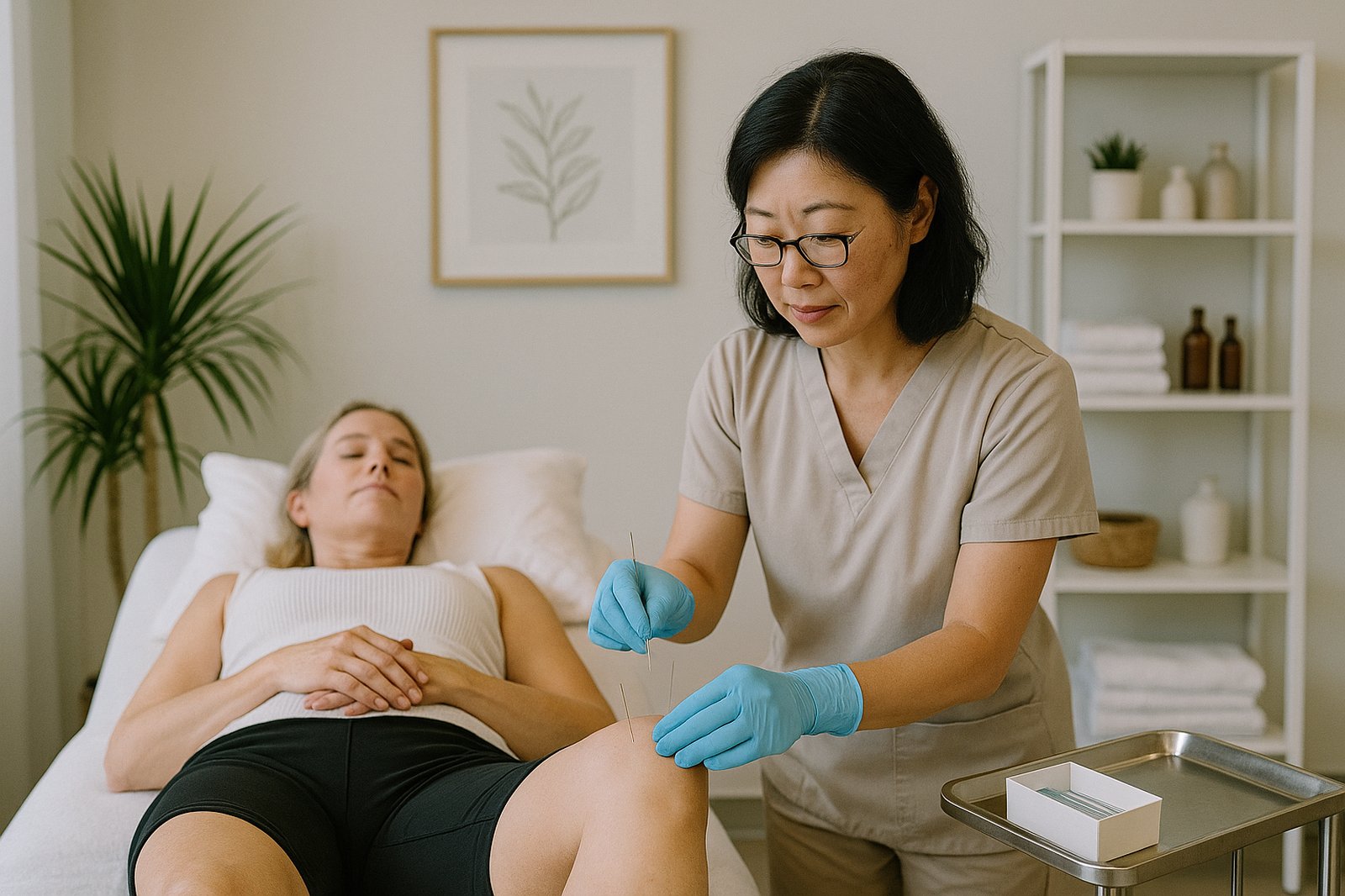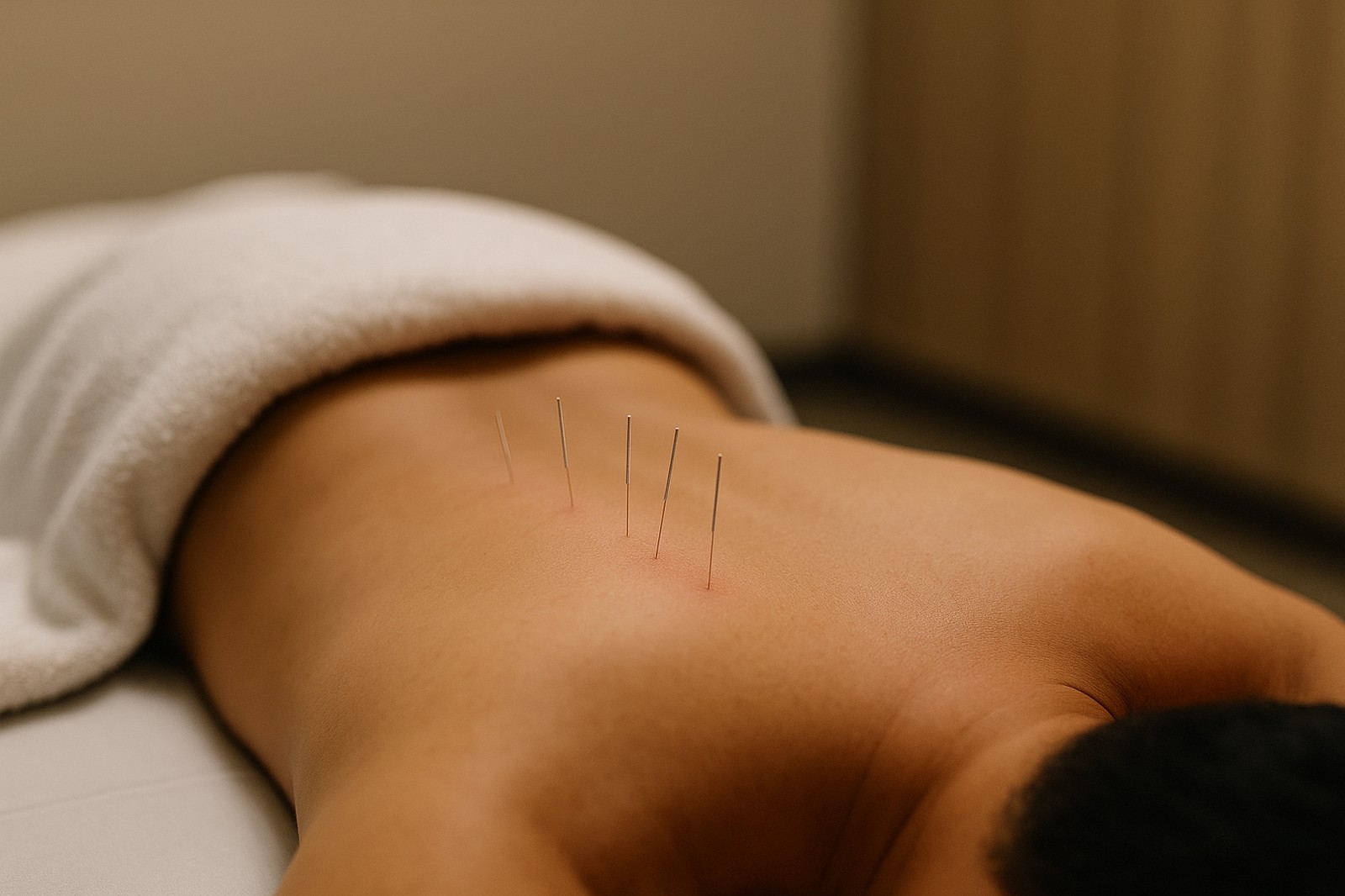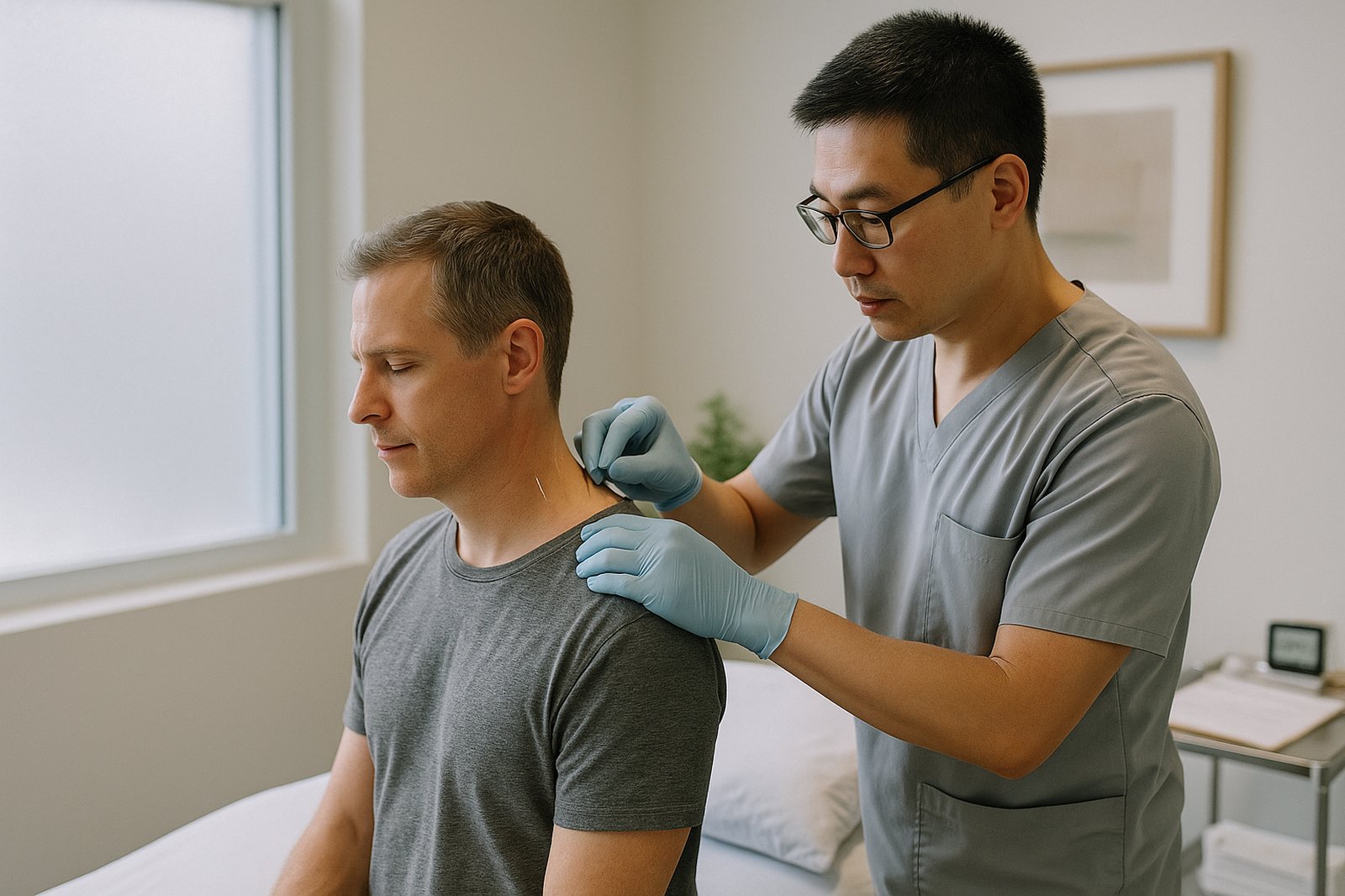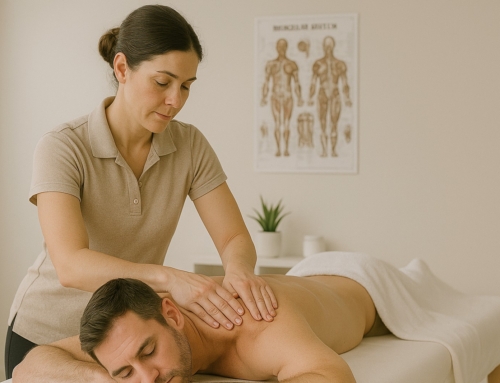Our treatment targets nerves, releases natural pain relievers, and engages your body’s pain pathways. Research shows moderate pain relief and better function for back and neck pain, knee osteoarthritis, and headaches. We provide personalized care in every session and may include cupping, with a Registered Acupuncturist prioritizing your safety. We’ll review your goals, discuss risks, and coordinate your care so you know exactly what to expect.

How Acupuncture Works: Mechanisms and Evidence
Acupuncture manages pain by stimulating peripheral nerves that send signals to your spinal cord and brain. This triggers the release of endorphins and natural analgesics, activating descending pain-modulation pathways for relief. Research from NCCIH demonstrates modest to moderate benefits, though results vary between individuals.
As part of Traditional Chinese medicine, we observe anti-inflammatory effects, improved microcirculation, and autonomic regulation. Laser acupuncture engages similar pathways through light-based stimulation.
Conditions and Symptoms It Can Help
We focus on evidence-supported conditions for chronic pain: low back pain, neck pain, knee osteoarthritis, and tension-type or migraine headaches. We can proudly say that our approach can lower your pain intensity and improve how you move and function. We’ll select points and treatment frequency based on your goals and how you respond, often combining our work with chiropractic or massage to give you the best results.

Chronic Pain Relief
Acupuncture works for chronic pain by reducing inflammation, improving circulation, and calming your nerves. We practise evidence-informed Traditional Chinese Medicine, using acupuncture, cupping, moxibustion, and laser acupuncture to address back pain, neck pain, and headaches. We find that our TCM services often work well in tandem with chiropractic and massage for lasting relief and improved function.
What a Typical Session Is Like
When you visit our Surrey, BC office, we start by reviewing your goals, health history, and current symptoms to find the most effective points for you. Your session might combine Traditional Acupuncture with cupping to ease pain, inflammation, and tension. We work alongside Chiropractic and Massage Therapy services to build a wellness plan that helps you feel relaxed, revitalized, and balanced.

Safety, Side Effects, and Choosing a Practitioner
Safety comes first: confirm your Acupuncturist holds provincial licensure with CCHPBC (College of Complementary Health Professionals of BC), liability insurance, and Clean Needle Technique training. Our Registered TCM Practitioner (TCM), Tim Tjiong, holds a Master’s degree from Beijing University of Chinese Medicine and has been registered since 2013. He offers Acupuncture, cupping, & moxibustion in a regulated, evidence-informed environment. We schedule an initial consultation to review your medical history, explain what side effects you might experience; brief soreness, minor bruising, or lightheadedness, and confirm our credentials meet your requirements.
Licensing and Credentials
Choosing an appropriately licensed practitioner anchors acupuncture’s safety and effectiveness. As mentioned above, Ting (Tim) Tjiong, our TCM Practitioner, is registered with CCHPBC and performs all acupuncture services at our clinic. Our Chiropractors and Registered Massage Therapists provide complementary care, and our practitioners hold specialized certifications in advanced manual therapy techniques, including Active Release Techniques for treating soft tissue restrictions, Graston Technique for instrument-assisted soft tissue work, Functional Movement Training for movement-based therapy, and Instrument Assisted Soft Tissue Mobilization for addressing scar tissue and fascial restrictions. You can review licensing and credentials on our team and JaneApp pages, then align your choices with ICBC or WorkSafeBC billing.
Frequently Asked Questions
Does Acupuncture Hurt?
Most people feel minimal discomfort. You might notice a brief pinch during insertion, followed by a dull ache, tingling, or warmth as the needle engages the tissue. We call these sensations “de qi,” and they typically fade within seconds. We adjust our technique to your sensitivity and check in with you throughout the session.
How Long Does an Acupuncture Session Take?
Your initial consultation typically takes 60 minutes, including your health history review, assessment, and first treatment. Follow-up sessions usually run 45-50 minutes. Needle retention time is normally 30 minutes, depending on your condition and treatment goals. We’ll discuss the recommended frequency (often starting with 1-2 sessions per week) and adjust based on your response.
Is Acupuncture More Effective Than Chiropractic?
It depends on what’s causing your pain and how your body responds. Research shows both work well for musculoskeletal problems. We’ll evaluate your condition, listen to what you prefer, and create a plan that’s right for you, often combining acupuncture and chiropractic to ease pain, help you move better, and support your recovery.
How Does Acupuncture Work to Relieve Pain?
Acupuncture relieves pain by stimulating specific points on your body that modulate nerves, release endorphins, reduce inflammation, and improve blood flow. We customize each session to your goals, combine techniques as needed, and monitor your progress so you feel supported and heard throughout your treatment.
Can You Do Acupuncture and Chiropractic on the Same Day?
Yes, we often combine acupuncture and chiropractic on the same day when it makes sense for your treatment. We adjust the order and intensity to minimize soreness. Let’s discuss your goals and medical history; for coordinated scheduling, contact 778-574-2629 or info@claytonheightschiropractic.com.
Can I Get a Chiropractic Adjustment After Acupuncture?
Yes, you can have a chiropractic adjustment after acupuncture. We often find that patients respond better when their tissues are relaxed first. We’ll watch how your body reacts and adjust the timing to keep everything safe. Let us know any sensations you’re experiencing and the medications you’re taking so we can determine the best treatment order.






